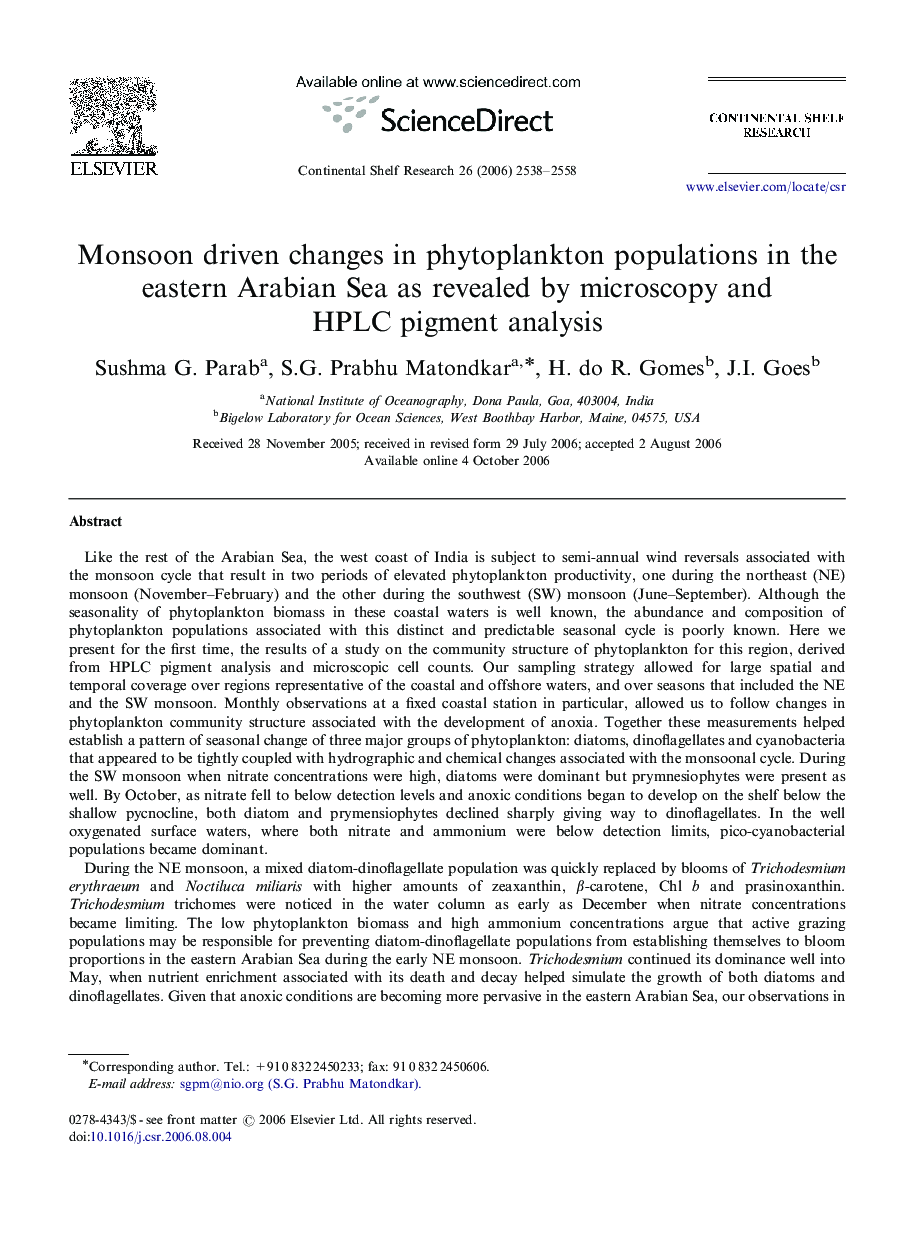| کد مقاله | کد نشریه | سال انتشار | مقاله انگلیسی | نسخه تمام متن |
|---|---|---|---|---|
| 4533856 | 1325227 | 2006 | 21 صفحه PDF | دانلود رایگان |

Like the rest of the Arabian Sea, the west coast of India is subject to semi-annual wind reversals associated with the monsoon cycle that result in two periods of elevated phytoplankton productivity, one during the northeast (NE) monsoon (November–February) and the other during the southwest (SW) monsoon (June–September). Although the seasonality of phytoplankton biomass in these coastal waters is well known, the abundance and composition of phytoplankton populations associated with this distinct and predictable seasonal cycle is poorly known. Here we present for the first time, the results of a study on the community structure of phytoplankton for this region, derived from HPLC pigment analysis and microscopic cell counts. Our sampling strategy allowed for large spatial and temporal coverage over regions representative of the coastal and offshore waters, and over seasons that included the NE and the SW monsoon. Monthly observations at a fixed coastal station in particular, allowed us to follow changes in phytoplankton community structure associated with the development of anoxia. Together these measurements helped establish a pattern of seasonal change of three major groups of phytoplankton: diatoms, dinoflagellates and cyanobacteria that appeared to be tightly coupled with hydrographic and chemical changes associated with the monsoonal cycle. During the SW monsoon when nitrate concentrations were high, diatoms were dominant but prymnesiophytes were present as well. By October, as nitrate fell to below detection levels and anoxic conditions began to develop on the shelf below the shallow pycnocline, both diatom and prymensiophytes declined sharply giving way to dinoflagellates. In the well oxygenated surface waters, where both nitrate and ammonium were below detection limits, pico-cyanobacterial populations became dominant.During the NE monsoon, a mixed diatom-dinoflagellate population was quickly replaced by blooms of Trichodesmium erythraeum and Noctiluca miliaris with higher amounts of zeaxanthin, β-carotene, Chl b and prasinoxanthin. Trichodesmium trichomes were noticed in the water column as early as December when nitrate concentrations became limiting. The low phytoplankton biomass and high ammonium concentrations argue that active grazing populations may be responsible for preventing diatom-dinoflagellate populations from establishing themselves to bloom proportions in the eastern Arabian Sea during the early NE monsoon. Trichodesmium continued its dominance well into May, when nutrient enrichment associated with its death and decay helped simulate the growth of both diatoms and dinoflagellates. Given that anoxic conditions are becoming more pervasive in the eastern Arabian Sea, our observations in particular, those of a shift towards dinoflagellate dominance during the development of anoxia assume particular importance.
Journal: Continental Shelf Research - Volume 26, Issue 20, December 2006, Pages 2538–2558